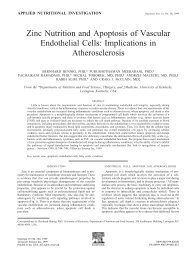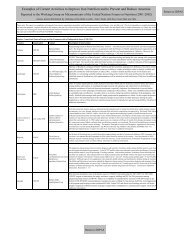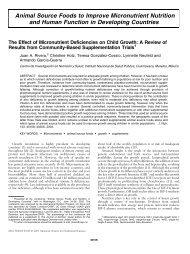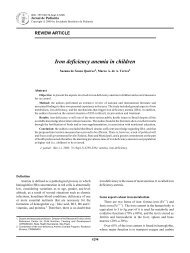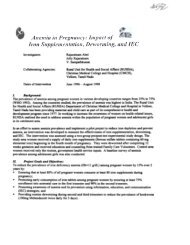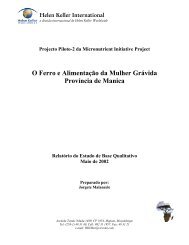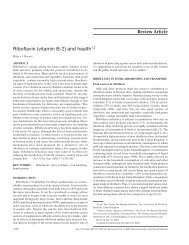WHEAT FLOUR FORTIFICATION WITH IRON - Idpas.org
WHEAT FLOUR FORTIFICATION WITH IRON - Idpas.org
WHEAT FLOUR FORTIFICATION WITH IRON - Idpas.org
Create successful ePaper yourself
Turn your PDF publications into a flip-book with our unique Google optimized e-Paper software.
C. Iron determination<br />
1. Label five 10 mL test tubes for 0, 20, 40, 60, and 80 ppm of iron standards and two test tubes<br />
for ashed flour samples.<br />
2. Add 2 mL each of iron standard solutions and ashed flour sample solutions using a volumetric<br />
pipette.<br />
3. Add 6 ml of bathophenanthroline-0.025%/sodium acetate-2M solution using a burette. Leave<br />
for 20 minutes.<br />
4. Compare the color of the sample to that of the standards.<br />
V. Interpretation<br />
Report results in intervals of 0 to 20, 20 to 40, 40 to 60, or 60 to 80 ppm. If the intensity of the color<br />
exceeds that of the 80 ppm standard, dilute 5 mL of the sample solution with 5 mL of 0.96M HCl<br />
and mix. Repeat analysis with the diluted sample. If the color of the diluted sample falls in the 20 to<br />
40 ppm interval, the actual concentration is 40 to 60 ppm of iron.<br />
VI. Notes<br />
The bathophenanthroline reagent can be replaced with α,α-dipyridyl (2,2'-bipyridine) [C10H8N2,<br />
PM 156.19, Fisher D-95] reagent. In this case, add 4 ml of the chromogen solution instead of 6 mL.<br />
The disadvantage to using the dipyridyl reagent is that slight differences in color are more difficult<br />
to distinguish.<br />
VII. References<br />
AOAC Official Methods of Analysis (1984), No. 14.011. JAOAC 27: 86, 396, 1944; 28: 77, 1945.<br />
19




